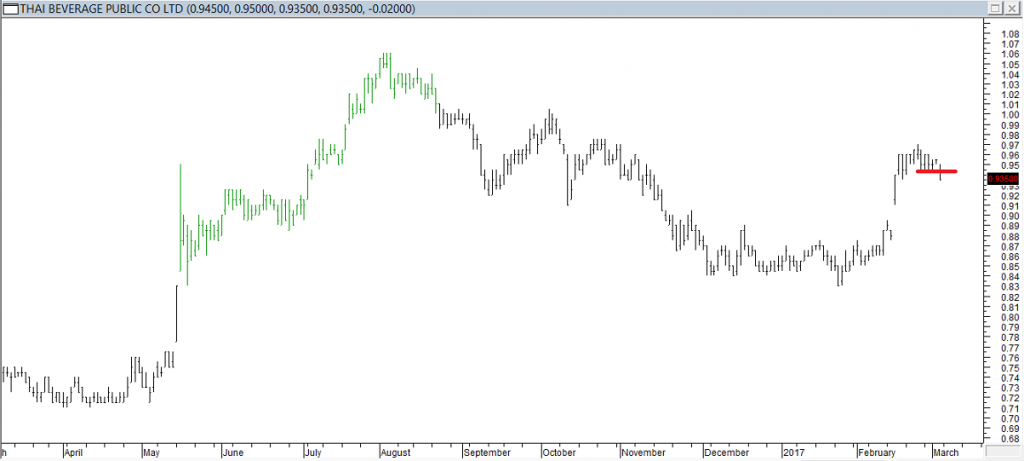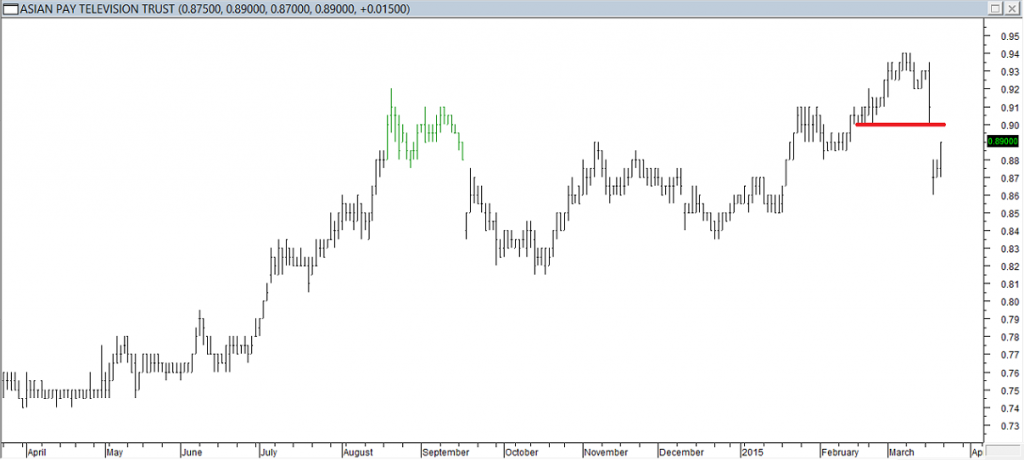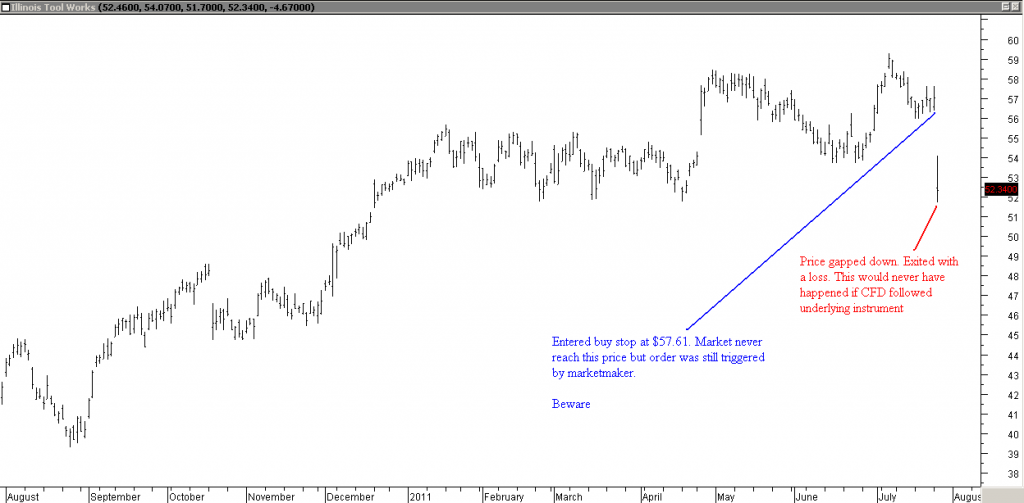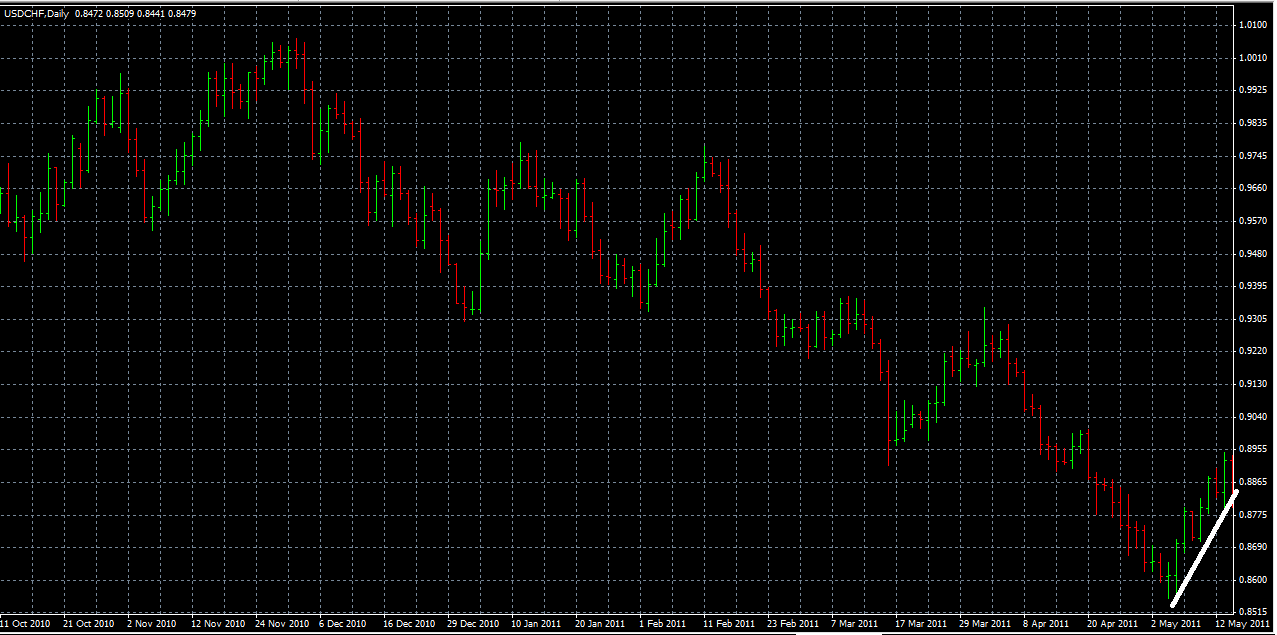Joel Rensink
I trade for infinite yield. This doesn’t mean that I always achieve it, but it is my goal.
I am not alone. Other private traders do the same. CTA’s and normal money managers are different in that they typically trade to get incentive fees and interest on their customer’s accounts. Private traders trade for alpha – direct return from directional moves and the volatility of the markets they follow. They don’t shoot for 15{4a1f3e6198f34cdc29cd00295e610d3eb87e60d053b64fe3462bed98c2ba8a06} returns per year. Try 40{4a1f3e6198f34cdc29cd00295e610d3eb87e60d053b64fe3462bed98c2ba8a06} – 60{4a1f3e6198f34cdc29cd00295e610d3eb87e60d053b64fe3462bed98c2ba8a06} average per year. The cost is drawdowns in account size and the emotional costs of time spent not making money trying to get back to an equity high.
Not that I expect every trade to make a million dollars. But as a composite, my trades in many markets simultaneously are structured to maximize return versus the risk I take. I have experienced serious drawdowns that I did not enjoy one bit, but I traded through them to get to new equity highs hundreds of times. There is a direct correlation between risk and reward, so when you have a definable, provable edge, you can apply money management that rewards you appropriately for diligently taking your trades with the correct position size.
There is an interesting secret that makes extreme trading possible and hugely rewarding if you have the fortitude to do it, and thoroughly understand the risks involved. Later in the article.
I appreciate the incredible response I received following my article here in the previous issue of Trader’s World– Dangerous Secrets that Guarantee Automatic Forex Profits. Apparently there are many readers who have the desire and will to learn how to manage their own money for above average returns in the forex markets. Fortunately, concepts that work in Forex also apply to all other tradable markets, especially futures.
I have been asked countless questions from new traders, “Which are the best markets to trade?” “What time frames or methods should I trade?” “What type of money management should I use to make a living at this?” “I am a struggling trader right now, with seemingly endless ups and downs. Do you have any advice or suggestions you would give to an aspiring trader?” And many more, some very specific to situations that they have come up against and need to solve before proceeding in their quest.
For traders, as in many skilled occupations, questions lead you to success. If you can pose an intelligent question, the likelihood of finding its solution is very close. You tend to find the answers to your problem buried in the question. The trader who just wants to make money without understanding what processes are involved needs to invest in a good fund or he can lose everything quickly trading for himself.
The ultimate question that traders are usually interested in is: How should I trade so that I can manage my financial resources best and take the least amount of time to achieve success to make the greatest return?
Integrated Solutions
This is the answer every trader is looking for, whether they realize it or not. By trading virtually error-free and as unemotionally as possible, you eliminate the greatest threats to your trading survival. This makes it possible for the trader to achieve the greatest amount of yield that is possible for his risk tolerance. Some have very strong risk tolerances, like myself, while others prefer moderate returns and drawdowns. This structure imposes needed order in trading; which is essentially extracting profits from ordered chaos.
Professional traders have integrated solutions for their trading to give them this ultimate edge. Fortunately this isn’t as difficult or tedious to create as it sounds. Once you have your solution in place you can speed up your learning about the markets and improve your bottom line.
A trading integrated solution is one that combines a trading methodology, money management and market management to deliver a coherent system that creates the desired result of harvesting money with the exact amount of risk you are willing to take. You then have a well-oiled business set up.
Good trading systems exist or can be created. Money management algorithms exist, some much better than others as we will see later in the article. Market management can be simple or complex depending on your needs to be involved in numerous markets. What you must create is a trading solution for the combination of operation ingredients you choose.
The integrated solution for a very simple trading plan (Donchian 40/10 breakout system) could be this:
Money Management Trade Unit:
Trading account funded with $30,000. Buy/Sell one contract of Sugar for every $15,000 in account size at system signal. Starting account size is $30,000.
System signals:
Buy 1 trade unit @ 1 tick above highest high of the last 40 days. If a trade is entered enter a position exit sell stop at the higher of a $800 stop/contract or the lowest low of the previous ten days.
Sell 1 trade unit @ 1 tick below lowest low of the last 40 days. If a trade is entered enter a position exit buy stop at the lowest of a $800 stop/contract or the highest high of the previous ten days.
Market Management:
When total closed equity is greater than $500K, allocate $250K to trading Coffee according to the same signals and money management. Close account when total account equity is greater than $1,000,000 for reassessment. If account equity should drop lower than $18K, cease trading for reassessment.
This is all some individual might need to take care of their trading needs. Concise and
compartmentalized, the trader has simple decisions to accomplish his trading task. The profits received are a byproduct of the integrated solution. After your solution is in place, revisions can be made to expand trading operations into other markets and systems and money management.
Of course, professional money managers require a much more complex integrated solution than the one above. In fact, before even attempting to structure one for themselves, the trader needs to consider his personal utility, or satisfaction with the proposed risk/reward potential. Most often, a person’s personal willingness to accept risk does not match what is necessary for optimum return. This is also why most traders can not exactly trade a system or methodology that originated with another trader. Their individual utilities are too different.
Expected Utility for Traders– Your Beliefs Dictate your Financial Future
The expected utility hypothesis applied to trading is such that the utility of a trader facing uncertainty is calculated by considering utility in each possible state and constructing a weighted average. The weights are the trader’s estimate of the probability of each state. The expected utility is thus an expectation in terms of probability theory.
The more risk-averse a trader is, the more he will be prepared to give up to eliminate risk, for example accepting $1000 sure profit instead of a 50{4a1f3e6198f34cdc29cd00295e610d3eb87e60d053b64fe3462bed98c2ba8a06} chance of $3000, even though the expected value of the latter is more. You may be risk-averse or risk-loving depending on the amounts involved and on whether the trade you face relates to becoming better off or worse off personally.
Similar to the concept of a guy I know who couldn’t afford to pay for lunch for a decade, then hit the Powerball one evening and bought cars for all of his friends the next week. His utility allowed him to afford 20 lottery tickets a week, but not lunch. The truth is, for good or bad; if his utility didn’t allow the ticket purchases he wouldn’t be living in Palm Beach never having to work again.
A small trader with $20,000 in his account will not likely take a trade which would risk $3K with only a 30{4a1f3e6198f34cdc29cd00295e610d3eb87e60d053b64fe3462bed98c2ba8a06} chance of returning $20K, even though the expectation of the trade is worth $6000. The same trader might jump at the chance to take the very same trade if he had quickly built his account to $500,000 and the risk was $75K and possible return $500K. Same risk percentage of account and percentage expectation.
The government considers utility theory in that they regulate high net worth individuals differently than the general public. They figure a man with 5 million can better afford to lose a couple of million than a man with 50 thousand to invest can afford to lose 25 thousand. They figure that a rich man will still be rich after losing half of his wealth, whereas the modest investor is much more limited in his choices from there on.
Financial utility is an imperative study for all who wish to be successful traders. You can start by researching Prospect Theory and Behavioral Finance. There are many fine papers on the subject available on the Internet.
While much trading discussions are usually spent on specific systems and markets, much less readable information has been dealt with on money management, and the type of money management that you might require to achieve your goals. Let’s see some representative examples.
Utility Decisions that Determine your Future Wealth
In Figures 1 through 3 we have the same Donchian 40/10 system mentioned earlier with three theoretical money management schemes starting with $30,000. The systems were in the market 55{4a1f3e6198f34cdc29cd00295e610d3eb87e60d053b64fe3462bed98c2ba8a06} of the time over a period of 31 years and each trade has at least one contract with $800 risk per contract traded.

Figure 1: Equity curve of single contract trading in Sugar
In Figure 1 above, you can see a simulated equity curve of single contract trading in Sugar. It had a maximum of 17{4a1f3e6198f34cdc29cd00295e610d3eb87e60d053b64fe3462bed98c2ba8a06} drawdown and returned 153{4a1f3e6198f34cdc29cd00295e610d3eb87e60d053b64fe3462bed98c2ba8a06} on equity, ending up with $76,000. Not terribly attractive to most traders as it represents a 4.9{4a1f3e6198f34cdc29cd00295e610d3eb87e60d053b64fe3462bed98c2ba8a06} annual return on investment. But with interest averaging around 3{4a1f3e6198f34cdc29cd00295e610d3eb87e60d053b64fe3462bed98c2ba8a06} accruing on the rest of the account, maybe not so bad.

Figure 2: Equity curve of the money management of one contract for every $15,000 and $800 risk per contract traded
Figure 2 shows the equity curve of the money management of one contract for every $15,000 and $800 risk per contract traded. With $199,000 in profits it represents 21.4{4a1f3e6198f34cdc29cd00295e610d3eb87e60d053b64fe3462bed98c2ba8a06} annual return on investment. Maximum drawdown, though, was 41{4a1f3e6198f34cdc29cd00295e610d3eb87e60d053b64fe3462bed98c2ba8a06}.

Figure 3: Equity curve of incredible leverage
Figure 3 An example of incredible leverage. Trading the $30,000 with a fixed fractional approach, risking 12{4a1f3e6198f34cdc29cd00295e610d3eb87e60d053b64fe3462bed98c2ba8a06} of account equity on each trade. Ending equity stands at $783,000, which represents a 124{4a1f3e6198f34cdc29cd00295e610d3eb87e60d053b64fe3462bed98c2ba8a06} annual return on investment, and a 2500{4a1f3e6198f34cdc29cd00295e610d3eb87e60d053b64fe3462bed98c2ba8a06} return on starting equity. Unfortunately, these kinds of returns are what many system sellers and market hucksters promise as possible and even likely.
92 trades into the series you were at $871,000. It then went into a multi year, 81{4a1f3e6198f34cdc29cd00295e610d3eb87e60d053b64fe3462bed98c2ba8a06} drawdown which stops at $159,000 at trade #235. Still better than where you started, but would you, or could you emotionally have kept trading that long to get to the upward spike that finally made back the profits? I’ll let you be the judge.
Real living, breathing humans determine what actual trading takes place, whether a system is used or thrown out; not computers. Humans have definite internal limits that stop them from doing things that are uncomfortable.
These examples highlight the fact that there are an unlimited array of money management possibilities for you to consider. First, you need a system that actually has an edge to apply the money management to. If the system has a difficult time remaining profitable trading one unit at a time, it isn’t going to get better with money management algorithms. And then, you have dozens of markets to choose from.
You need to seriously ask yourself, “What do I really want to accomplish, and what am I willing to do to get it?”
Trading correctly is serious work, and not to be engaged by those hopeful that everything will just work out without diligence. You are trading with and against some of the greatest minds on earth who may have information and technology superior to your own. It may come down to how much risk you are willing to take, and how, to get to your objective.
There is a side benefit available not mentioned earlier that bears on the likelihood that you can succeed as a trader. The opportunity to trade multiple markets simultaneously can drastically reduce your overall drawdowns as some markets can be profiting while others are not. Then, as happens regularly, a number of markets simultaneously all start trending and large profits are possible. The more markets, the better, but even 3 to 5 well chosen markets can smooth equity curves substantially. Trading more markets also increases the odds that you will be trading a winning market when it makes a historic move, the kind that can change a trader’s life, like copper and crude oil in recent years.
How about short-term and daytrading systems? Does money management make it possible for you to multiply your wealth even faster because of all the trades you are exposed to? It could, if you have a unique method that has a very strong edge. The difficulty with daytrading is that you miss the directional moves overnight which greatly contribute to your bottom line. Often, a good short-term system is better than an excellent daytrading system for money management purposes.
The Donchian 40/10 system used in the examples previously is a very old but durable system. It is not being recommended as a system for a new trader. But, you could do worse. The sad fact is, even it has a greater achievable edge on daily charts in futures markets than any daytrading system currently offered to the public.
If you can define your trading edge and it’s expectation, and it is large enough; you can use money management that is based on the Kelly Criterion. With it you are able to extract the greatest possible return from your trading system than is possible from any other money management scheme. This return doesn’t come for free. The cost is potentially very deep drawdowns.
In 1987 Larry Williams, a renowned commodities trader, surprised the trading world in the Robbins World Cup Trading Championship by turning $10,000 into $1,100,000 over 12 months. Larry was once ahead more than $2,000,000 before a losing streak took nearly $1,000,000 off his winnings. He used a version of the Kelly Criterion money management with a volatility breakout system that had a average hold time of 2 days per trade. His daughter entered the same contest ten years later in 1997; she turned $10,000 into $100,000 using the same principles.
Now, for the secret that makes trading for infinite yield possible for Larry Williams and us.
The greater a trader’s tolerance for drawdown, the greater the potential return.
● A robust trend following system that averages 35{4a1f3e6198f34cdc29cd00295e610d3eb87e60d053b64fe3462bed98c2ba8a06} annual returns can expect to have a 45 {4a1f3e6198f34cdc29cd00295e610d3eb87e60d053b64fe3462bed98c2ba8a06} drawdown at some point. The actual average drawdown may be only 25{4a1f3e6198f34cdc29cd00295e610d3eb87e60d053b64fe3462bed98c2ba8a06}.
● What is interesting, with the same system, if you are willing to tolerate an occasional 55{4a1f3e6198f34cdc29cd00295e610d3eb87e60d053b64fe3462bed98c2ba8a06}
drawdown – with an average drawdown of 40{4a1f3e6198f34cdc29cd00295e610d3eb87e60d053b64fe3462bed98c2ba8a06}, your average annual return can go up to 60{4a1f3e6198f34cdc29cd00295e610d3eb87e60d053b64fe3462bed98c2ba8a06}.
● If you are willing to put up with an occasional deadly 70{4a1f3e6198f34cdc29cd00295e610d3eb87e60d053b64fe3462bed98c2ba8a06} drawdown and an average
drawdown of 50{4a1f3e6198f34cdc29cd00295e610d3eb87e60d053b64fe3462bed98c2ba8a06}, the same system can average 80 – 100 {4a1f3e6198f34cdc29cd00295e610d3eb87e60d053b64fe3462bed98c2ba8a06} annual returns. Or much more, as we’ve seen in the example of Larry Williams in his contest.
It doesn’t take many 100{4a1f3e6198f34cdc29cd00295e610d3eb87e60d053b64fe3462bed98c2ba8a06} return years to multiply your account to any size you might desire. Note: In no way am I recommending this as a money management style for beginning traders. The concept is fraught with emotional and financial hazards. The potential for profits and losses are extreme.
It is the compounding of profits year after year with your own integrated solution that will bring you success. With an understanding of Utility Theory, and in particular your own utility curve; you will have a much greater edge over the competition.
Don’t let the market know your utility better than you.
Commentary
A well-written article which consist of a simple trading plan. However, do consider the returns vs the drawdowns to see if it suits you
If you find my blog useful, tip me a few dollars to show your support.






